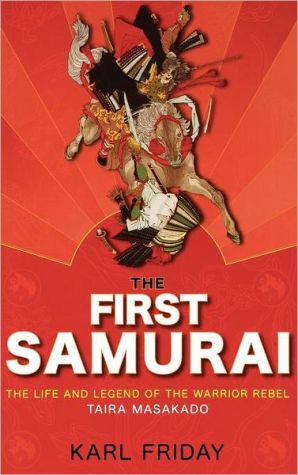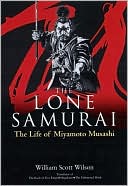First Samurai: The Life and Legend of the Warrior Rebel, Taira Masakado
Praise for\ The First Samurai\ "In his lucid and meticulously researched reconstruction of the tenth-century rebel Taira Masakado, Karl Friday illuminates the attitudes and institutions of tenth-century Japan, and explains the enduring appeal of this audacious man who strove to be emperor. Through the life of Masakado, Friday brings alive the patterns of early Japanese warfare, and the complex interaction between central and regional authority. The First Samurai will remain the definitive...
Search in google:
A portrait of Japan's first significant samurai leader and his world Was samurai warrior Taira Masakado a quixotic megalomaniac or a hero swept up by events beyond his control? Did he really declare himself to be the "New Emperor"? Did he suffer divine retribution for his ego and ambition? Filled with insurrections, tribal uprisings, pirate disturbances, and natural disasters, this action-packed account of Masakado's insurrection offers a captivating introduction to the samurai, their role in 10th-century society, and the world outside the capital-a must-read for those interested in early Japan, samurai warfare, or the mystique of ancient warriors. Karl Friday (Athens, GA) is a Professor of History at the University of Georgia. A renowned expert on the samurai and early Japanese history, he has authored four books and appeared on numerous A&E, History, and Discovery Channel programs. He is active on several Web forums. Matthew Loving - Library Journal Friday (history, Univ. of Georgia; Hired Swords: The Rise of Private Warrior Power in Early Japan) begins his book in the year 939, when Samurai hero Taira no Masakado made Japanese history by attacking outlying provinces and threatening to war against the ruling central government. The rebellious wars earned Masakado fame and the title of Shinno, or New Emperor, but also eventually cost him his head, which was promptly put on display in the ancient capital of Kyoto. Friday then goes on to explain that, according to legend, Masakado's severed head would not be conquered: "For three months, they say, it hung outside the East Market, its eyes never closing and its color remaining unchanged." Such reports inspired awe in those who heard them, and the malevolent spirit of Masakado was soon revered; Buddhist temple shrines were built to honor his memory and appease his infamous anger. An expert of Samurai warfare, Friday explains through the legend of Masakado the importance and realities of Samurai culture in tenth-century Japan. Structured as an academic analysis, this book is ultimately an enjoyable read for eager Japanophiles and lovers of cultural folklore. Recommended.
Click to read or download
List of Figures. Acknowledgements. 1. Masakado and His Legacy. Masakado's Legacy. The First Samurai. 2. Masakado's World. The Court and the Countryside. Premise, Reality and Adjustment. Tax Farmers, Princes and Bandits. Alliances and Immigrants. The Taira in the East. 3. Masakado and His Uncles. The Alliance. The Battle at Shimozuke Capital. Yoshikane's Revenge. 4. New Enemies and New Friends. The Feud with Sadamori. The Quarrel in Musashi. Ambushes and Raids. Rainbows, Earthquakes and Bandits. Conclusion. 5. Insurrection. The Incident at the Hitachi Capital. Lord of the Kant. The Court's Response. "Insurrections East and West". Conclusion. 6. Apotheosis. The Letter to Fujiwara Tadahira. Rebellion or Redemption? Miscreancy & Misfire in Hitachi. Fujiwara Hidesato. Blunder, Mishap and Rout. The Final Reckoning. Conclusion. 7. Epilogue. Seeking Sumitomo. And to the Victors. Posterity. Conclusion. Notes. Bibliography. Index.
\ Library JournalFriday (history, Univ. of Georgia; Hired Swords: The Rise of Private Warrior Power in Early Japan) begins his book in the year 939, when Samurai hero Taira no Masakado made Japanese history by attacking outlying provinces and threatening to war against the ruling central government. The rebellious wars earned Masakado fame and the title of Shinno, or New Emperor, but also eventually cost him his head, which was promptly put on display in the ancient capital of Kyoto. Friday then goes on to explain that, according to legend, Masakado's severed head would not be conquered: "For three months, they say, it hung outside the East Market, its eyes never closing and its color remaining unchanged." Such reports inspired awe in those who heard them, and the malevolent spirit of Masakado was soon revered; Buddhist temple shrines were built to honor his memory and appease his infamous anger. An expert of Samurai warfare, Friday explains through the legend of Masakado the importance and realities of Samurai culture in tenth-century Japan. Structured as an academic analysis, this book is ultimately an enjoyable read for eager Japanophiles and lovers of cultural folklore. Recommended.\ —Matthew Loving\ \ \








